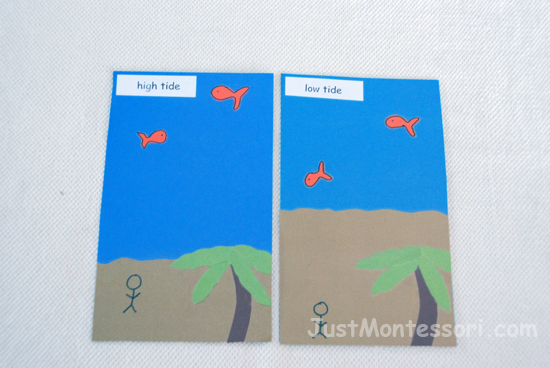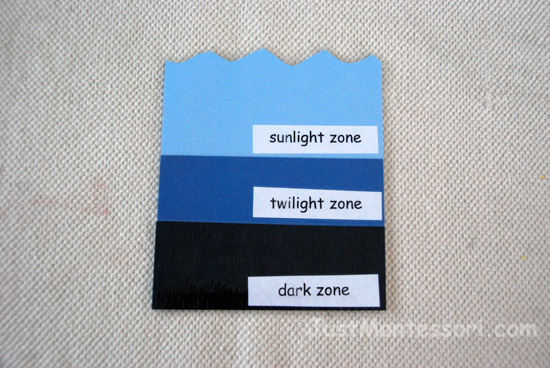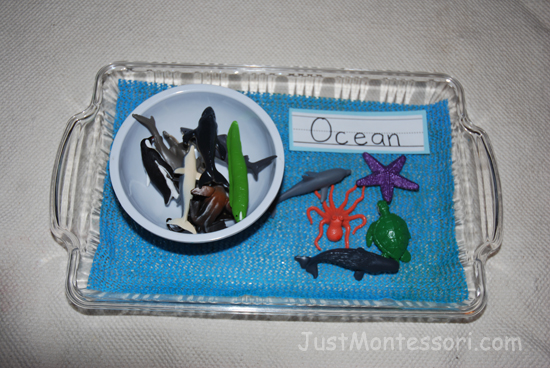Book choices for today:
The Four Oceans Wil Mara
Hello Oceans Pam Munoz Ryan
Oceans Beverly McMillan
Ocean Sunlight Molly Bang
Jellyfish! Monica Molina
Jellyfish Louise Spilsbury
Jellyfish Carol Lindeen
Geography: (first circle)
Need for lesson – Sandpaper Globe (Montessori material)
Geography 50
We have learned about all of the continents of the Earth. Can we name them on this Sandpaper Globe? What do we call all of the blue on this globe? Oceans. The largest ocean is the Pacific Ocean (point it out on the globe). The Pacific Ocean contains many different islands. What is an island again? The second largest ocean on Earth is the Atlantic Ocean. The third largest is here, called the Indian Ocean. Then we have the Arctic Ocean on this part of the Earth. During winter the Arctic Ocean is almost completely covered in sea ice.
The oceans are filled with many types of marine life. They include mammals, fish, mollusks, and crustaceans. There are also many plants that grow in the oceans. Some of them are algae, sea grass, and kelp.
Scientists divide the ocean up into horizontal zones. The sunlit zone, near the top, is full of life with plants and animals. The twilight zone comes next as you go deeper into the ocean. It is colder and darker in this zone, having less life. Way down deep is the icy-cold dark zone. It is very, very dark down in this zone because there is no sunlight that reaches it.
Shorelines are where oceans and seas meet land. There are many different types of shorelines. There are rocky shores, marshes, dunes, forests, and beaches. Sometimes when you are at the beach the water may come up high onto the beach or be far out and you have to walk out to get into the water. This is because of tides. The pull of gravity from the Sun and the Moon creates tides that in turn, create ocean currents. The gravitational pull of the moon creates two types of tides: high and low.
What about the waves in the ocean, if you have been to the beach, do you like to jump in the waves? Waves are actually energy. It is energy that moves across the ocean’s surface. In the case of ocean waves, wind provides the energy. Wind causes waves that travel in the ocean. The energy is released on the shorelines. If a strong wind is blowing across the ocean what size waves do you think there will be?
Additional Works:
Tide Chart – I made this little chart to show the children when discussing the tides at the ocean.
Ocean Zones – This is another chart I made to show the children when we talk about the different ocean zones.
Ocean Animals



Songs/Poems:
Ocean Song
The oceans of the world are big and blue.
Remembering their name, that easy for you.
The Pacific, Atlantic, Indian too,
Don’t forget the Arctic, or we trick you!
I Went to the Ocean
I went to the ocean and what did I see?
A beautiful seashell, was waiting for me.
I put on my swimsuit, and played in the sand,
I built up a castle, and, boy, it was grand!
Just visit the ocean, I’m sure you’ll agree!
Zoology: (second circle)
Need for lesson – A book on jellyfish of your choice and Parts of a Jellyfish. Have a discussion about jellyfish and demonstrate parts of a jellyfish. You can also have an art activity.


Song (CD) choices for today:
Swimming in the Sea Our Earth – CD
Ocean Friends Make Believe CD
Buy Weeks 35-38 PDF
-
 (J) Weeks 35-38$25.00
(J) Weeks 35-38$25.00
